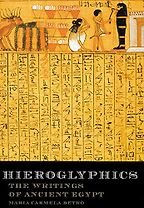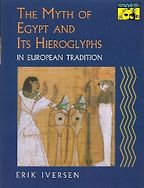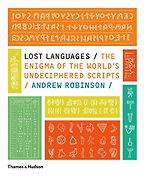Books by Maria Betro
“This is a wonderful book, full of illustrations. It’s laid out almost like an art book. It is, I think, the best of a number of books that are available to introduce readers to hieroglyphics in a serious way. Betrò doesn’t say much about the grammar or syntax but you can get that elsewhere. What she does do is offer a nice selection of signs from Gardiner’s Sign List, and groups them according to sensible categories. So all the signs for plants are in one place, all the signs for the gods are in another place. Each sign occupies a full page, and the page is laid out in such a way that you can immediately understand the sign’s phonetic value, its function, whether it’s a determinative or not, whether it has a Demotic or hieratical equivalent, and so on. She also discusses the meaning of the sign in its relation to Egyptian religion. So you really get a sense of the role that each sign plays within this theological system.” Read more...
The best books on Hieroglyphics
Diane Greco Josefowicz, Historian
Interviews where books by Maria Betro were recommended
-

1
Hieroglyphs: A Very Short Introduction
by Penelope Wilson -

2
Hieroglyphics: The Writings of Ancient Egypt
by Maria Betro -

3
The Myth of Egypt and Its Hieroglyphs in European Tradition
by Erik Iversen -

4
Lost Languages: The Enigma of the World's Undeciphered Scripts
by Andrew Robinson -

5
The Dawning Moon of the Mind: Unlocking the Pyramid Texts
by Susan Brind Morrow
The best books on Hieroglyphics, recommended by Diane Greco Josefowicz
The best books on Hieroglyphics, recommended by Diane Greco Josefowicz
Reading the hieroglyphs of ancient Egypt reveals much about the worldview of a civilisation that rose to prominence 5000 years ago and flourished for thousands of years. Here, intellectual historian Diane Greco Josefowicz—whose book, The Riddle of the Rosetta, co-written with Jed Buchwald, tells the story of how the meaning of the hieroglyphs was deciphered in 19th century France—recommends the best books to learn more about hieroglyphics.




